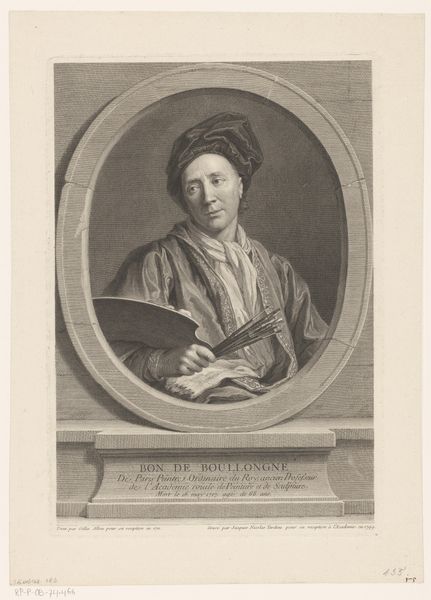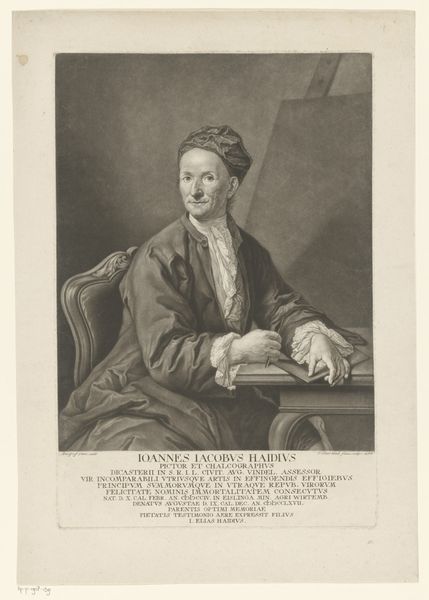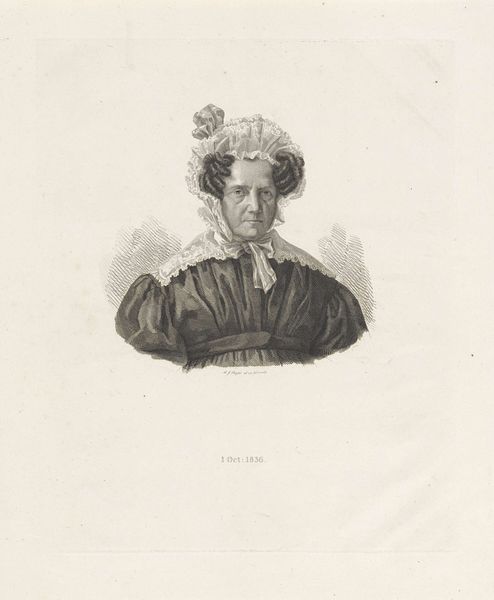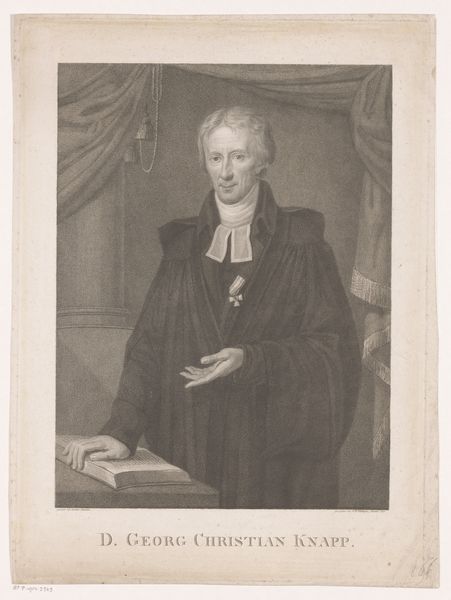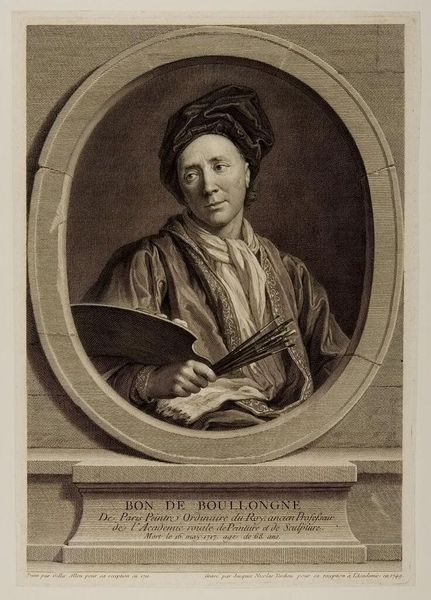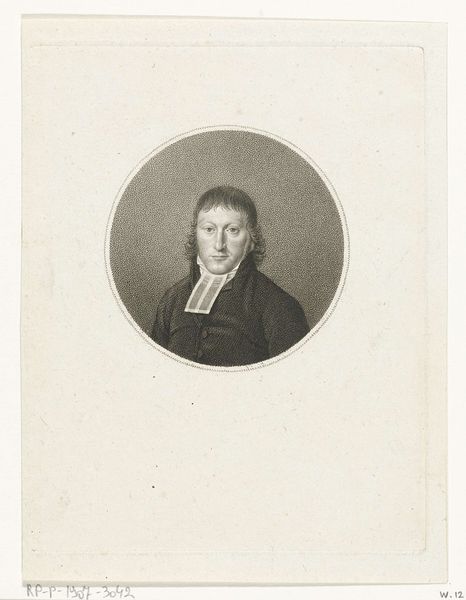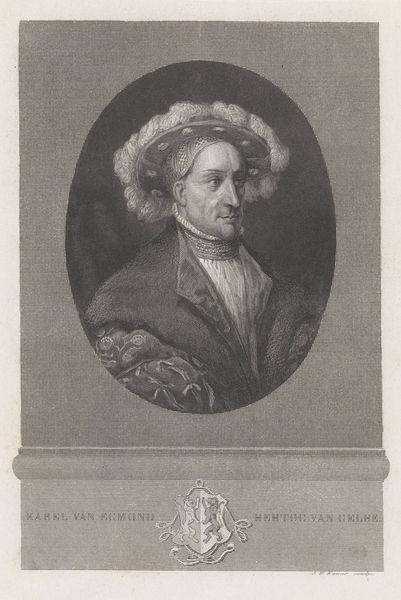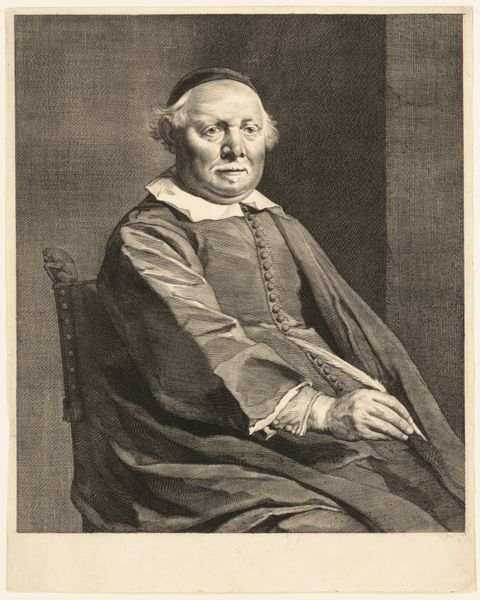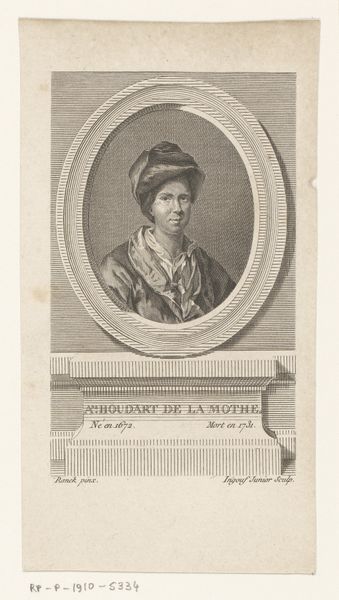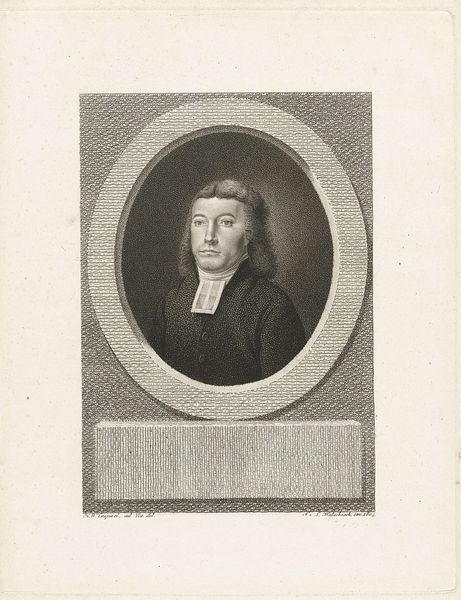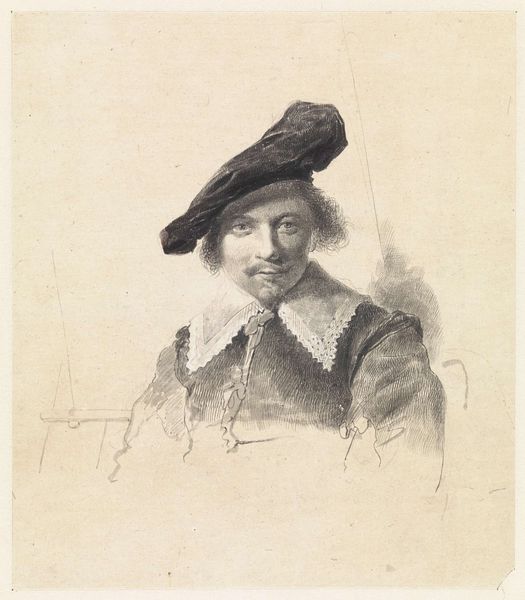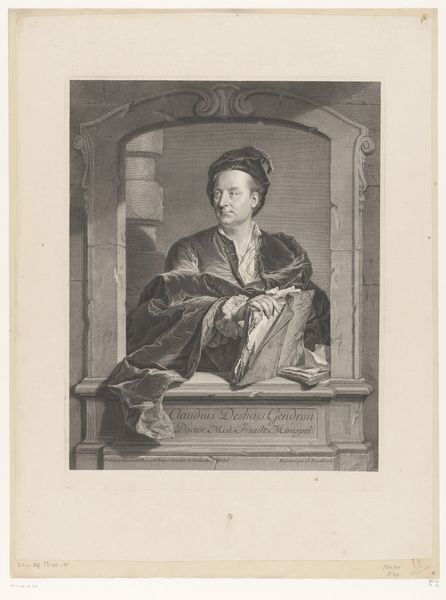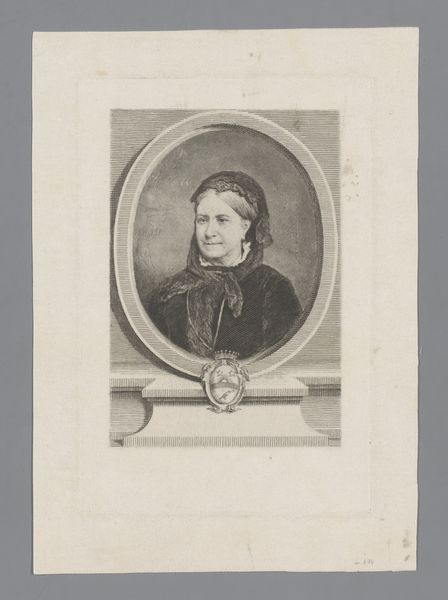
engraving
#
portrait
#
baroque
#
charcoal
#
engraving
Dimensions: height 305 mm, width 233 mm
Copyright: Rijks Museum: Open Domain
Curator: Looking at this somber piece, one almost gets the feeling of peering into a bygone era. It’s "Portrait of Conrad Friedrich Hurlebusch", an engraving dating somewhere between 1740 and 1774. The artist is Pieter Anthony Wakkerdak. Editor: It strikes me immediately with its textures – that fur hat and the feathered sash contrast beautifully with his aged face, almost telling two different stories in one. There's an inherent dignity there, wouldn't you agree? Curator: Definitely. This type of portrait was vital in solidifying the social standing of the subject. In many ways, the engraver's success hinged on how well they could communicate power and respectability in their portrayal. Hurlebusch must have seen this portrait as crucial in constructing his public persona. Editor: And those accessories play such a crucial part in projecting that persona. That hat alone - it almost feels ritualistic, denoting status. The feathers speak to ceremony, to events and social performances now lost to time. I'm curious about the deeper connotations there. Curator: Well, such symbols would be easily readable by the contemporary public. Each item of clothing, each accessory signaled something very specific about his rank, profession, and social allegiances. Think about who was commissioning and viewing such portraits. Were they displayed in public buildings? Or more likely, private residences? Such factors affected what and how much a portrait was expected to convey. Editor: The portrait almost acts as a time capsule then. Seeing his aging, we can imagine life's struggles, battles maybe, successes definitely, all marked on his face. The symbols create a sense of narrative depth. The engraver almost creates a historical object the moment it is finished. Curator: Precisely, the act of portraying a sitter within certain symbolic and visual frameworks makes it a potent document within its time, shaping both how the subject wished to be seen and the social values that were at play in its interpretation. Editor: Looking at this piece then, isn’t simply seeing a man, but a symbolic reconstruction that continues to echo through centuries of history. It speaks not only about the individual but to the very nature of persona and representation. Curator: Yes, and understanding such portraits requires understanding the historical contexts in which they were made, viewed, and ultimately, assigned significance.
Comments
No comments
Be the first to comment and join the conversation on the ultimate creative platform.
